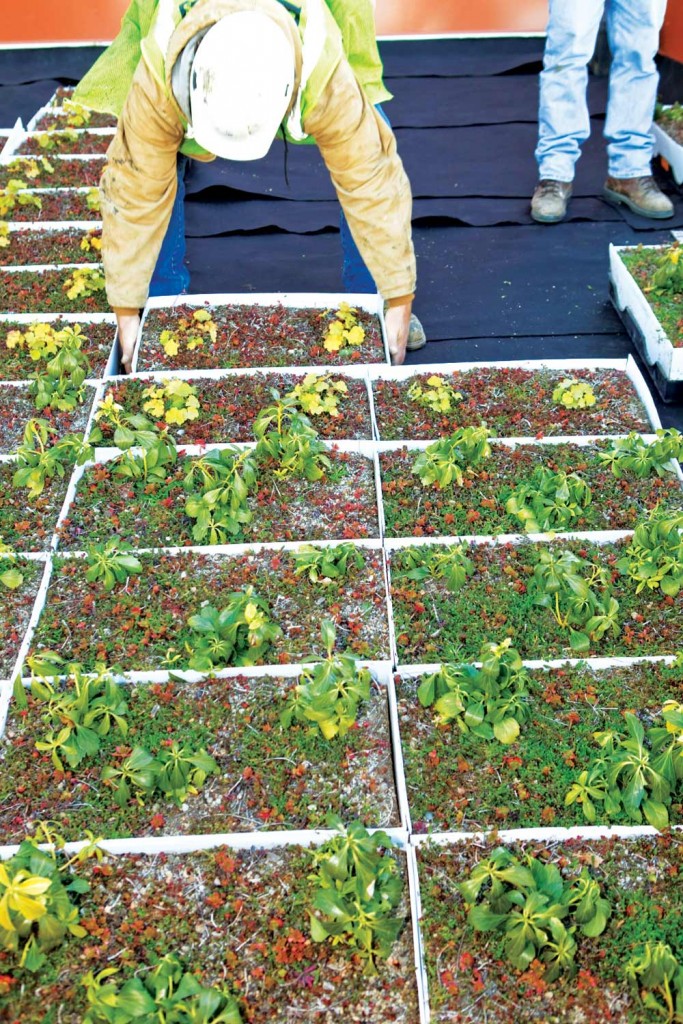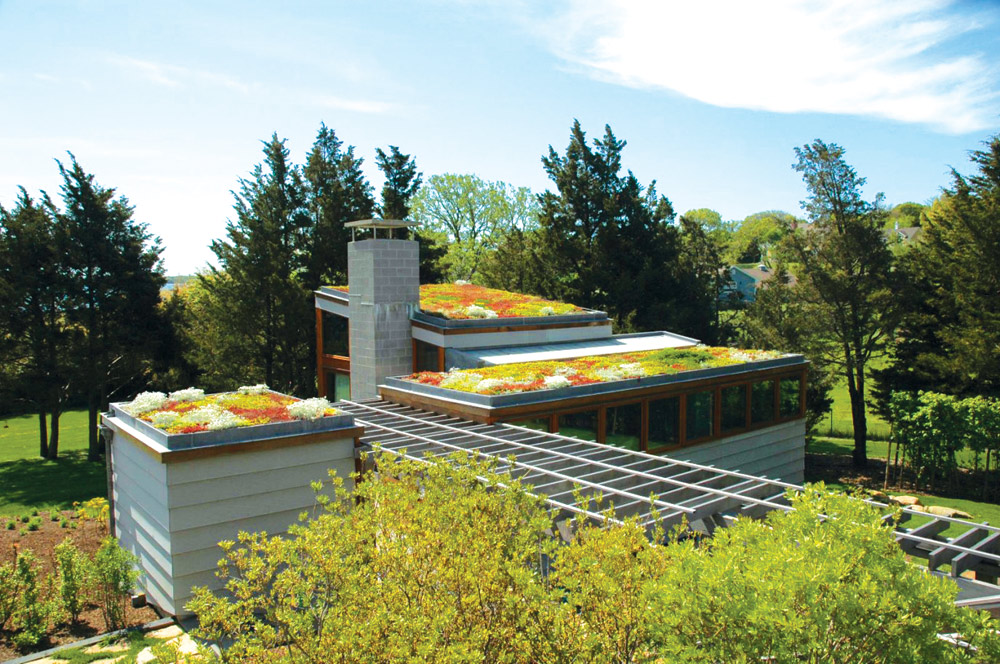Turning your ocean home roof into an eco-garden is now an exciting reality
The ‘green roof’ has long been the realm of commercial buildings and, to the untrained observer, is something of a vague concept—an altitudinal vegetative space, perhaps, or maybe an elevated garden.
A green roof does indeed exist out of the line of sight of the grounded eye, but that’s not to say out of sight is out of mind. This curious, yet fascinating, innovation is going through an evolution of sorts, expanding from large commercial spaces atop offices, hotels, city halls, and factories to home grown residential rooftops.
So what exactly is a green roof? Here’s the scientific definition: a series of layers including a waterproof membrane, root barrier, drainage mat, erosion control fabric, lightweight engineered soil, and vegetation. All well and good so far, but in layman terms, a green roof is just that—a green space which can be designed to grow any combination of vegetation from plants to shrubbery, even produce.
Both aesthetically pleasing and environmentally sound, green roofs reduce stormwater run-off and energy consumption, two environmental bonuses best witnessed atop Chicago’s City Hall, where an expansive green roof helps to cool the iconic and monumental building. New York’s always trendy Brooklyn is also bedding in as a green roof hotspot, with success stories like Brooklyn Grange billing itself confidently as a commercial urban farm.
One of the firms leading the charge into residential green roofs is Apex Green Roofs of Somerville, Mass., which has maintained the green roof at Boston’s Four Seasons Hotel, and constructed green roofs for homes in nearby Cambridge, and also Gloucester, just north of the city.
Apex owner Charles Sinkler says while Europe has been a pioneer in residential green roof construction, public interest has been steadily rising here in the United States over the past five years.
“The rise in popularity of green roofs is largely a combination of the green movement and the stormwater issue,” he says, citing local governments in German cities which began charging building owners for stormwater run-off which was seen as a leading cause of pollution.


“A green roof is not only good for the environment,” says Sinkler, “but home owners can create something aesthetically pleasing, and it is proven to at least double the life expectancy of a roof.”
There are two types of green roofs—extensive and intensive. The latter are essentially elevated parks, able to sustain shrubs, trees, walkways, and benches due to their complex structural support, irrigation, drainage, and root-protection layers. A foot or more of soil is usually needed to grow an intensive green roof, allowing homeowners to grow flowers, vegetables, and shrubs. “Once you add irrigation, you can do almost anything,” he says.
Not surprisingly, intensive green roofs need more maintenance and are more expensive—about $20 per square foot, according to Sinkler. For homes that have less square footage to work with than commercial properties, an extensive green roof is a popular choice, requiring less than six inches of soil and less complicated water sluicing systems.
“They are very lightweight and can be planted with succulent plants that don’t need irrigation,” says Sinkler, adding that extensive green roofs cost around $12 per square foot. Apex also includes four maintenance visits per year for the first two years after a green roof is laid down. The company’s Gloucester project was a particular hit, as it showed how to combine a green space with creature comforts. The 800 square feet space was wedged between two different parts of the house and became a tranquil escape from the confines of the house. The green roof incorporated a patio, hot tub, and planters for larger plant species, including bamboo and small shrubs. “It’s instant gratification,” says Sinkler.
One of the cleverer green roofs Apex has done was in Southwest Harbor, Maine, for a private residence bordering Acadia National Park. The roof was built on top of the home’s garage and covered with semi-intensive herbaceous perennials and shrubs, making the garage appear almost as part of the landscape.
Green roofs like these are becoming more popular with homeowners and municipalities as a way for buildings to be less visually distracting from the surrounding natural landscape.
One aspect of a green roof, however, that does induce hesitation from homeowners is potential leakage. Bear in mind that there would be an entire vegetative space, and the water needed to sustain it, atop your house.
Luckily, technology known as Electric Field Vector Mapping exists to prevent this, with the ability to locate a leak the size of a pinhole, or even a larger tear, with speed and accuracy. A green roof may not be for everyone, but it’s certainly a concept that’s firmly on the rise. apexgreenroofs.com.


